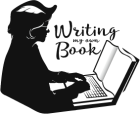Having a LinkedIn profile is essential for any non-fiction writer. It’s not about searching for a job. It’s about making connections within your non-fiction market. LinkedIn has become a favorite site for people seeking to share and gain expertise!
Here are four must do activities for non-fiction writers who wants to get the most out of their LinkedIn profile.
1. Complete Your Profile.
As you go through the steps, provide information that complements your goals. For example, I have resume writing experience. However, it’s no longer my goal to grow a resume business. I sold the domain and its content. Because of this, I deleted my resume-focused LinkedIn profile, so the only profile remaining on LinkedIn is my writing- and coaching-focused profile. I rewrote the Summary so its focus is limited to my current services.
Likewise, your LinkedIn profile should be a marketing tool reflecting how your past experience prepares you for what you currently want to do. You attract the kind of person you want to work with by the message you deliver through your profile. If the message is mixed, you make it difficult for others to make the decision to contact you.
Remember, LinkedIn profiles often come up high in the list when someone Googles your name. So you want your profile to make a first impression complimentary to what you have to offer.
2. Make connections.
When you first start out, look for people you already know on LinkedIn. Don’t just ask any and everyone to connect with you. You could be seen as a spammer.
Once you’ve connected with a few acquaintances, start looking for individuals with whom you want to connect who are “friends with a friend.”
3. Embrace a giving attitude.
LinkedIn revolves around the idea that it is more blessed to give than to receive. So give some positive recommendations to individuals who have joined your network. Provide specific details that demonstrated the worth of the person you are recommending (percentages, specific accomplishments, revenue figures, etc.). Many people will reciprocate. Of course, it is also acceptable to ask for recommendations as well.
However, your giving attitude needs to stop short of accepting every invitation to connect you receive. Some people want to use LinkedIn as a sales platform, so they ask for connections to complete strangers. I do accept invites from strangers; however, I only do so if they give me a valid reason for doing so.
For example, I have had a number of people ask to connect so we can dialog about their writing and publishing goals. These invitations are always welcomed. However, whenever I receive the default LinkedIn invitation from a stranger, I ignore it.
You may choose to do otherwise; yet it can lead to voluminous spam messages if you accept the wrong invites. I speak from experience.
4. Join a group.
You can look for groups connected with your non-fiction topic, career or trade, alumni associations, and more. It’s a solid way to establish yourself as an expert. If you have the time and energy, you can start your own group. Otherwise, just start a discussion in one of the existing groups.
A writing group is a great place to connect with other non-fiction writers. Learn from them and share with them.
You may also want to join groups dedicated to the topic of your non-fiction book. One of my clients has done this, which has led him to both volunteer work and a productive ‘retirement’ earning money doing what he loves.
Summary
These four activities work together. They leverage your LinkedIn profile’s ability to position you as someone who has something valuable to say. The first three activities take very little additional time once you have put them in place.
The fourth activity is something worth continuing to invest some time in every week. You never know when a few minutes of group interaction could open the door for speaking engagements or podcast interviews.

